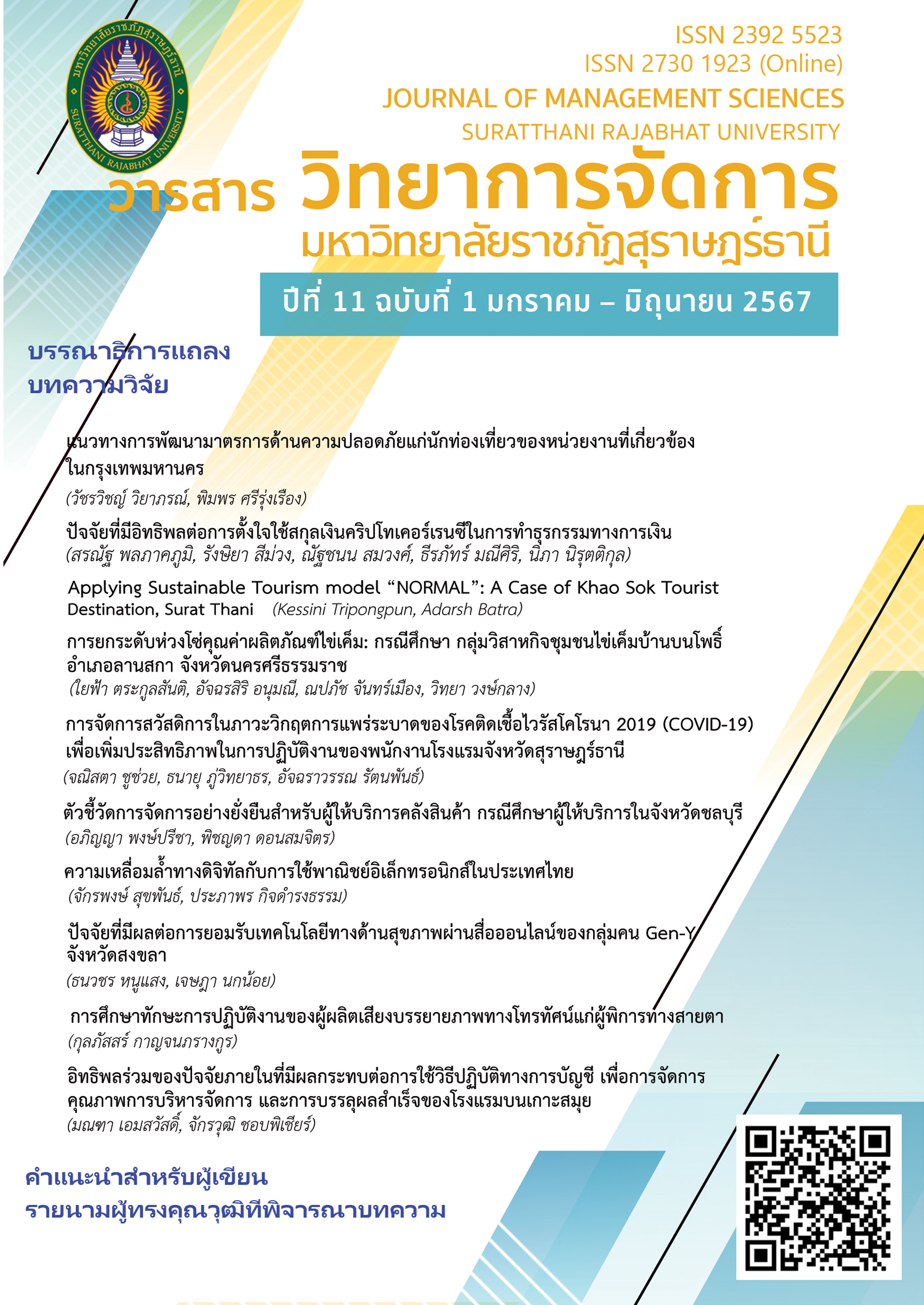A Study of Audio Description Producing Skills on Television for Blind
Main Article Content
Abstract
Television Audio Description on television for blind people is providing essential visual information to blind people watching television as well as other people. The production of Television Audio Description on television began to play a role during the time of the digital transformation of the television system and is in the process of providing access to information services to blind people and which is not yet widespread in almost every program as it should be. The research aimed to study the skills and operational processes of television audio describers to create understanding and make the general public know more about Audio Description services. It’s a guide to practice as a narrative audio describer for the general public. This research is qualitative research and used an in-depth interview to gain insights into all dimensions of the study. The population and sample in this study were television Audio Description production specialists with at least 5 years of work experience. The results are that with Audio Descriptions on television since 2014, television stations have to change to provide media services for accessing information to people with disabilities of all types. The production of television was therefore carried out by personnel within the station. Working experience in audio production can be summarized as follows: 1) Audio Description writing skills; 2) word and sentence skills; 3) vocabulary and rehearsal skills before recording; and 4) recording and editing skills. These are essential skills for developing an Audio Description production expert that requires constant practice and expertise.
Article Details

This work is licensed under a Creative Commons Attribution-NonCommercial-NoDerivatives 4.0 International License.
References
Boonjua, T. (2019). Persons with disabilities and the access, receive or utilize the television services. NBTC Journal, 3(3), 120-146.
Chantavanich, S. (2010). Qualitive research method (18th ed.). Chulalongkorn University Printing Hourse.
Creswell, J.W. (2009). Research design: Qualitative, quantitative, and mixed methods approaches (3rd ed.). Los Angeles: SAGE.
Disabilities Thailand (DTH). (2015). Empowerment of persons with disabilities Act, B.E. 2550 (2007). http://web1.dep.go.th/sites/default/files/files/law/37_0.pdf.
Kanjanaparangku. Kl. (2020). Trends of Audio Describer and Guideline of developing skills for Audio Description in Television Program for the Blind. Research Report, Rajamangala University of Technology Thanyaburi.
Kruchit, A. (2015). Principle of audio description. Thammasat printing house.
Lopez, M., Kearney, G., & Hofstädter, K. (2018). Audio description in the UK: What works, what doesn’t, and understanding the need for personalising access. British Journal of Visual Impairment, 36(3), 274–291. https://doi.org/10.1177/0264619618794750
Miles, M B. & Huberman, A M. (1994). Qualitative data analysis. An expanded sourcebook (2nd ed.). Thousand Oaks, CA: Sage.
Nopsakun, A. (2020, Auguest 2) Accessing or recognizing and taking advantage of news through the media of television. http://www.braille-cet.in.th/Braille-new/?q=article-12389.
Panchaiphoom, P. (2016). Behavior and satusfaction on viewing “KUBKAOKOPPLADEN” of Modern Nine Television of the Audience [Unpublushed master’s thesis]. Dhurakijpundit University.
Reviers, N. (2016). Audio description services in Europe: an update. The Journal of Specialized Translation, Issue 26 – July 2016, 232-247.
Sornbali, A. (2021, June 26). The world of the blind must have Audio Description (Audio) reflects civil rights. https://decode.plus/20210617/.
The National Broadcasting and Telecommunication Commission (NBTC). (2017, December 27). Announcement of the Office of the Board of Directors broadcasting, television and the National Telecommunications (NBTC) on guidelines for the preparation of sign language interpreters captions and audio commentary for the television service as announced NBTC on promotion and protection of the rights of persons with disabilities to access or recognize and take advantage of the list of the television business.


